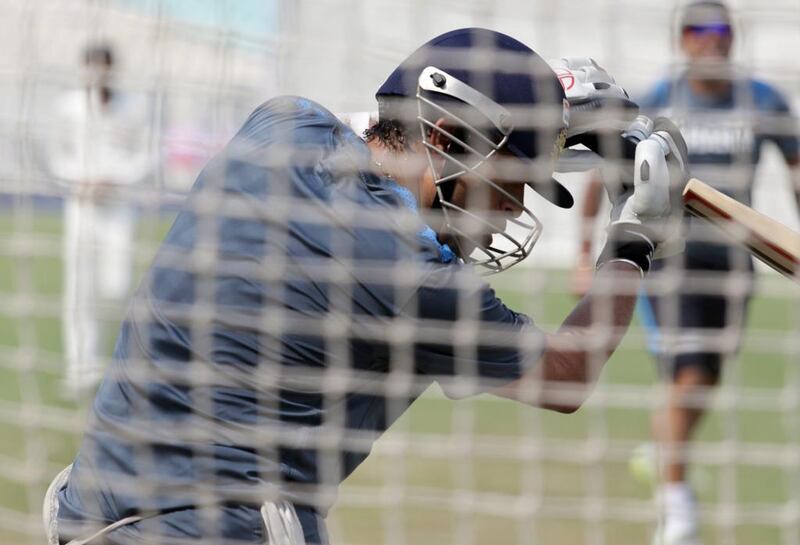Can a goodbye be measured? Because if you can, then the next two weeks will constitute the loudest, longest and largest goodbye known to man. That would be, in order, India’s goodbye to Sachin Tendulkar first, followed by that of the rest of the world.
It is appropriate that we talk in measurements, because that is what humans do. All of us measure and are measured – that is how we give context to existence. But measuring Tendulkar has become more urgent and increasingly the easiest – and laziest – way to make sense of him.
So we measure Tendulkar by the weight of his runs, or by the heft of his hundreds, by how much time he has spent at the crease, by his average, his average in wins, losses and draws, in the first innings or the fourth, on the second day or fifth.
Tendulkar, 40, is also an industry, one currently in full bloom in India (and even in non-farewell periods, never far from full bloom). That means a whole new world of measuring, by his brand value, by how much he earns, by how much others earn because of him, by how many adverts he appears in, by his impact on India’s economy.
Measuring him has become a default setting, because he has been not just a great player, but because how else do you deal with omnipotence?
When he steps on to Eden Gardens on Wednesday, many will know that it has been 1039 days, or two years, 10 months and four days, since he scored his last Test hundred. But Kolkatta does not seem to care so much, so gargantuan and energetic have the city’s preparations been for Tendulkar’s second-to-last Test.
The Cricket Association of Bengal is officially – and not with great imagination – calling the week “Salute Sachin”. A music album has been launched, with 11 songs (seven in Bengali, four in Hindi) about Tendulkar. A life-size wax replica is already in place inside the dressing room.
An exhibition of 100 Tendulkar photographs has been unveiled.
Match-day tickets will have Tendulkar’s face on them. On one day of the Test, 70,000 Tendulkar masks might be given to spectators; on another day, every seat will come with a placard, which, raised in unison, will form a giant Tendulkar face.
There might be more, there might be less. But we can all agree that as well as being the loudest, longest and largest, this sounds like it could well be the tackiest goodbye known to mankind.
How will he respond? It is impossible that he is not affected by the occasion, though if someone had said over 20 years ago that one player, under so much attention and adulation, under such a burden, would go through a career essentially unscathed and unaffected and remain hinged, as Tendulkar has, that would have also been thought impossible.
A little inkling came last week in the unlikely, rural setting of Lahli in Haryana, when Tendulkar played his last first-class game for Mumbai, in the Ranji Trophy. Likely it says nothing for his prospects in this series, in Tests, against international bowlers and a more -than-handy pace attack, in front of massive crowds.
It was on TV, available to watch these many miles away, and if we are to apply a measurement, it ticks all the boxes. His unbeaten 79 in the second innings was the game’s highest score, one of only three fifties and it led Mumbai to a tense win, chasing 240. It was a tasty pitch, too, viper-green grass, with balls zipping through, zinging about.
But measuring it is useless. The beauty of Tendulkar’s batting lay in its ugliness. In every ball that struck his pads, in every inside or outside edge, in each play and miss, in every unconvincing stroke, an essential truth about Tendulkar revealed itself: nothing drove him like the act of batting itself. That was the reward.
The innings and that chase, the conditions and circumstance, these were all part of a problem that had been set for Tendulkar to go about resolving as he deemed best. It was the kind of problem he has set about resolving for years.
It was here, in this village, basically, that the same competitive fire, the one that has seen him through so many years, burnt luminescent for one of the very last times. He was clearly loving that challenge, even now, at this age, like he was 16 again and hitting Abdul Qadir for those famous sixes in Pakistan. This, I reckon, was a far more intimate, a far more personal and a far truer goodbye.
osamiuddin@thenational.ae
Follow us on twitter at @SprtNationalUAE





